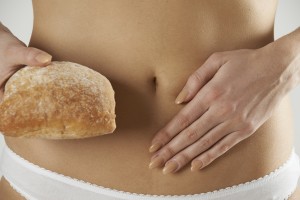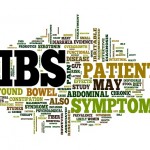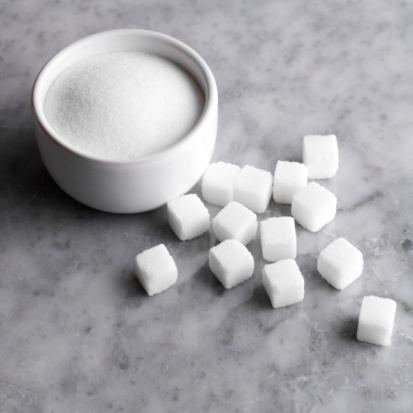Celiac disease vs. IBS, differences in symptoms, causes, and treatment
 At first, celiac disease and irritable bowel syndrome (IBS) may appear similar as they share many common symptoms, but if you take a deeper look you will notice vast differences between the two. The biggest difference is that one is a disease and the other is a syndrome – you may think this is just a difference of name, but it also refers to differences in conditions.
At first, celiac disease and irritable bowel syndrome (IBS) may appear similar as they share many common symptoms, but if you take a deeper look you will notice vast differences between the two. The biggest difference is that one is a disease and the other is a syndrome – you may think this is just a difference of name, but it also refers to differences in conditions.
A disease has a known cause and a measureable effect on the body. Syndromes don’t have definitive causes and their effects on the body are not easily measured. Syndromes are associated with the symptoms they cause, while a disease is associated with the long-term physiological changes it causes. To explain this more clearly, IBS symptoms do not cause lasting consequences on the body, whereas the celiac disease symptoms can cause damage and changes to the digestive system.
Furthermore, IBS only exists with the presence of its symptoms, whereas celiac disease may still be present even in the absence of symptoms.
Distinguishing between the two is important because the celiac disease diagnosis implies a lifelong gluten-free diet, which may seem easy but can be difficult due to possible cross-contamination.
Here we will further outline the differences between celiac disease and IBS, including differences in symptoms, causes, treatments, and even diets.
Link between celiac disease and IBS
A 2014 study showed there was a higher prevalence of celiac disease in IBS children, revealing there could be some sort of link between the two. The authors assessed the prevalence of celiac disease in 992 children with IBS, functional dyspepsia (indigestion), and functional abdominal pain. The final study group consisted of 782 children.
Based on blood tests, 15 percent of children tested positive for celiac disease, 12 percent of them also had IBS. The authors wrote, “The identification of IBS as a high-risk condition for celiac disease might be of help in pediatric primary care, because it might have become routine to test for celiac disease indiscriminately in all children with recurrent abdominal pain, although our finding suggests that the screening should be extended only to those with IBS. This new approach might have important implications for the cost of care because it has been estimated that in children with FGIDs [functional gastrointestinal disorders], screening tests are common, costs are substantial, and the yield is minimal.”
James E. Squires and colleagues added in an accompanying editorial, “Based on the study by Cristofori et al, we suggest that selective screening for celiac disease is warranted for children with IBS, but not for children with other FGIDS. However, the lines distinguishing IBS from alternative FGIDs are often blurred. It is within this reality that pediatric healthcare providers should examine the evidence, evaluate the patient and family, weigh the likelihood of a false positive test result, and make the decision that they believe will benefit the patient most.”
Celiac disease vs. IBS: U.S. prevalence
 It is estimated that one in 133 Americans have celiac disease, and the condition affects men more than women. It is also suggested that 83 percent of patients go undiagnosed or are misdiagnosed, meaning the prevalence may be actually higher. Celiac disease is also commonly seen in individuals with type 1 diabetes, Down syndrome, Turner syndrome, and other auto-immune conditions, collagenous colitis, and in those with a first-degree relative with celiac disease.
It is estimated that one in 133 Americans have celiac disease, and the condition affects men more than women. It is also suggested that 83 percent of patients go undiagnosed or are misdiagnosed, meaning the prevalence may be actually higher. Celiac disease is also commonly seen in individuals with type 1 diabetes, Down syndrome, Turner syndrome, and other auto-immune conditions, collagenous colitis, and in those with a first-degree relative with celiac disease.
IBS affects women more than men, and roughly 20 percent of the population has IBS, but only 10 percent will consult their doctor about it. Lost productivity at work due to IBS is estimated at $21 billion or more annually, and it is the most common gastrointestinal condition diagnosed by gastroenterologists.
Table: Celiac disease vs. irritable bowel syndrome
Below is a table, which looks at the many components of both IBS and celiac disease for your quick reference. The comparative chart was put together by the U.S. National Library of Medicine.
Prevalence in Western countries: 50–100 per 100,000 About 20 percent, but only 10 percent consult GPs Ethnic group Any, more common in Ashkenazi Jews Not reported Genetic factors CARD 15/NOD-2 mutations predispose Not reported Risk factors More common in smokers History of psychological stress Diagnosis Biopsy Clinical. Diagnosis supported by symptoms for more than six months, worsened by stress, full blood count and erythrocyte sedimentation rate normal Anatomical distribution Any part of gastrointestinal tract. Perianal disease common. Patchy distribution – ‘skip lesions’
Sites involved (in order of frequency): terminal ileum and right side of colon, colon alone, terminal ileum alone, ileum and jejunum
Colonoscopy
Extraintestinal manifestations
Common
Associated with other conditions such as dysmenorrhea, non-ulcer dyspepsia, fibromyalgia
Presentation
Variable. Pain, diarrhea, weight loss all common.
Ileal Crohn’s disease: there may be subacute or even acute intestinal obstruction. Diarrhea – watery, but no blood or mucus
Crohn’s colitis: identical to ulcerative colitis, but rectum spared and presence of perianal disease. Many present with symptoms of both small bowel and colonic disease. In few, isolated perianal disease, vomiting from jejunal strictures and severe oral ulceration
Recurrent colicky abdominal pain or cramping, relieved by defecation
Abdominal distension
Episodes of diarrhea but can have more of a constipation pattern
Patients well, no weight loss
Histology
Submucosal or transmural inflammation common. Deep fissuring ulcers, fistulas. Patchy changes, granulomas
Normal
Differentiating celiac disease and IBS signs and symptoms
When it comes to the signs and symptoms of celiac disease and IBS, there are many of them shared by both conditions but there are distinct differences that distinguish the two. Some of those key differences include:
- Although both cause gas, bloating, and diarrhea, celiac disease can also be accompanied by other symptoms like dental defects, joint pain, and osteoporosis.
- If symptoms are not present in IBS, you don’t have IBS. In celiac disease, you can still have the disease without symptoms.
- IBS affects movement of the bowels – celiac disease does not, but it can cause damage to the intestines.
- In IBS, patients may be sensitive to gluten, but in celiac disease gluten is the cause of symptoms.
Other symptoms associated with celiac disease include anemia, loss of bone density, itchy, blistery skin, damage to dental enamel, headaches, fatigue, nervous system injury, joint pain, reduced functioning of the spleen, acid reflux, and heartburn.
Comparing celiac disease and IBS causes
 Celiac disease is an autoimmune disease, and gluten is the target for the immune system to attack. Not much is known about autoimmune diseases, and so the exact cause is unknown. What we do know is, when gluten is ingested the immune system mistakes it for danger and attacks it, thus causing symptoms associated with celiac disease. Not only does this cause symptoms, but it can begin to cause damage along the intestines as well.
Celiac disease is an autoimmune disease, and gluten is the target for the immune system to attack. Not much is known about autoimmune diseases, and so the exact cause is unknown. What we do know is, when gluten is ingested the immune system mistakes it for danger and attacks it, thus causing symptoms associated with celiac disease. Not only does this cause symptoms, but it can begin to cause damage along the intestines as well.
Damage to the intestines, in particular the villi, is dangerous because they are responsible for absorbing nutrients, and so if the villi can’t absorb nutrients you run the risk of malnutrition.
Gene mutations have been studied as possible causes for celiac disease, which can also be triggered after a surgery, pregnancy, or viral infection.
IBS, too, does not have an exact cause, but doctors and researchers have speculated a combination of factors that can lead to IBS symptoms. Some of these factors include brain-gut signal problems, gastrointestinal motility problems, pain sensitivity, infections, small intestinal bacterial overgrowth, neurotransmitters, genetics, food sensitivities, and mental health problems.
Celiac disease and IBS: Risk factors and complications
Risk factors for celiac disease include having a family member with celiac disease or dermatitis herpetiformis, having type 1 diabetes, Down syndrome or Turner syndrome, autoimmune thyroid disease, Sjögren’s syndrome, and microscopic colitis.
Risk factors for IBS include being younger than 45, being female, having a family member with IBS, and having a mental health problem like depression or anxiety.
Complications of celiac disease include malnutrition, loss of calcium and bone density, infertility and miscarriages, lactose intolerance, and cancer.
Complications of IBS include diarrhea or constipation, aggravating hemorrhoids, and intolerance to certain foods. IBS may cause you to have a reduced quality of life as you must be mindful of what you eat, which could lead to depression. Be mindful of your mental health if you’re living with IBS as mental problems could worsen your condition.
Difference between celiac disease and IBS diagnosis and treatment
Diagnosing celiac disease involves laboratory tests, like blood tests along with endoscopy and capsule endoscopy. The blood tests will reveal antibodies against gluten, and the endoscopy is used to determine if there is any damage done to the intestines and villi.
Unlike celiac diagnosis, IBS diagnosis isn’t simple, as there isn’t a specific test and it won’t show up in blood work. Your doctor will review your symptoms along with ruling out other conditions that may cause similar symptoms. Some red flags your doctor will look out for to a more serious condition are unexplained weight loss, swelling or lump in the stomach, rectal bleeding, and anemia.
Primary treatment of celiac disease involves the complete avoidance of gluten and gluten products. Some key foods to eliminate are:
- Barley
- Bulgur
- Durum
- Farina
- Graham flour
- Malt
- Rye
- Semolina
- Spelt (a form of wheat)
- Triticale
You may want to work with a dietician to determine what foods are safe to eat. Some may surprise you – soy sauce, for example, as many varieties contain gluten!
You may also need to take a multivitamin to ensure you are getting adequate nutrition, along with anti-inflammatory medication.
Treating IBS also involves diet changes, but unfortunately there isn’t one specific diet that all patients can follow. Therefore, you will probably have some hard days and some easier days as you figure out what’s safe to eat. One rule of thumb is to watch your fiber as it can contribute to symptoms.
General eating tips for IBS include:
- Have regular meals
- Drink plenty of water
- Restrict coffee and tea intake
- Reduce alcohol and fizzy beverages
- Reduce intake of resistant starches
- Limit fruit to three portions
- Avoid artificial sweeteners, especially if you have diarrhea
Exercise can also help alleviate IBS symptoms, along with stress management and regular probiotic intake. Some helpful medications for IBS include antispasmodics, laxatives, antimotility medications, and low-dose antidepressants.
Working closely with your doctor will help you uncover the most effective treatments for you, but do keep in mind it may involve trial and error. Try not to become discouraged and think of it as you are ruling out what doesn’t work and you are one step closer to a treatment that does.
Irritable bowel syndrome symptoms, recognizing IBS symptoms, triggers, and types
Irritable bowel syndrome (IBS) symptoms can occur at any time, leaving you bloated, cramping, and overall uncomfortable. Furthermore, symptoms are ever-changing and IBS flare-ups can range in severity as well, so if you don’t know what triggers the symptoms, you could be left with the burden they bring. Continue reading…
-
5 Diet Plan Saving Tips !
It’s nine thirty at night and you have followed your new diet
-
Herbal Weight Loss Pills Reviews - How To Choose The Best From The Rest?
Many people worldwide are suffering from obesity. Obesity is responsi
-
How Does A Person Acquire Diabetes
Diabetes is a condition where the body, or to be precise the pancr
-
On Cultivating Resilience
When I was 350 pounds I didnt believe it was possible for me t
-
A Summary of the Diet Solution Reviews
It is greater than doubtless, that for those who’re searching
-
Can Using A Pill A Day Assist you to Shed Some Pounds?
Being slim or thin does not make one healthy. But naturally, being ov
- DON'T MISS
- How Body Cleansing Helps You Lose Weight
- Facts about different types of ulcers
- Losing Body Fat Fast: How To Lose Back Fat Fast(Fast Way To Lose Fat)
- Personal Fitness Training at Your Home
- The Magic Formula Works Its Wonder Today Part 4
- Eat Fat To Burn Fat
- Superfoods for Getting Over Food Poisoning
- These Are The Best Fruits & Vegetables To Eat For Weight Loss
- Three Aerobic Exercises To Lose Weight
- Dos and Donts For Proper Combination of Walking and Weight Loss




